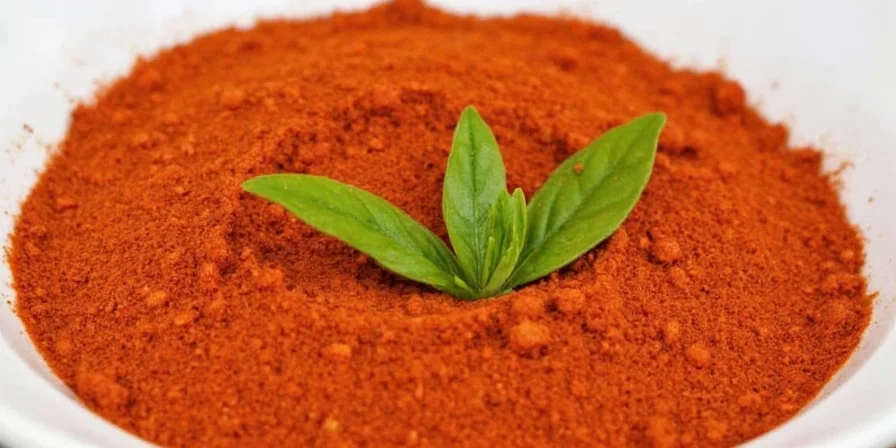How to Make Perfect Smoked Paprika at Home: Your Complete Step-by-Step Guide
Creating authentic smoked paprika requires just 4 key steps: selecting the right peppers, smoking at 175°F (80°C) for 3-4 hours, dehydrating until brittle, and grinding to a fine powder. This guide reveals the precise techniques used by Spanish paprika producers, including wood selection secrets and temperature controls that prevent bitterness. You'll achieve restaurant-quality results with ingredients you likely already have in your kitchen.
What You'll Need: Exact Measurements for Perfect Results
- 4 large red bell peppers (or 6 Hungarian wax peppers for mild heat)
- 1 tablespoon olive oil (for color enhancement)
- 2 cups applewood chips (soaked for 30 minutes)
- Smoker or oven setup with temperature control
- Dehydrator or oven
- High-speed spice grinder
Step-by-Step Process: The Authentic Spanish Method
- Prep Peppers: Cut peppers into quarters, removing seeds and white membranes. Toss with olive oil to enhance color development.
- Smoke at Precise Temperature: Maintain 175°F (80°C) for exactly 3 hours. Higher temperatures create bitter compounds - use a digital thermometer to verify.
- Dehydrate to 10% Moisture: Dry at 135°F (57°C) until peppers snap when bent (8-12 hours). This critical step prevents mold during storage.
- Grind & Sift: Cool completely before grinding. Sift through 100-mesh sieve for professional texture.
| Wood Type | Smoke Time | Flavor Profile | Best Pepper Pairing |
|---|---|---|---|
| Applewood | 3 hours | Mild sweetness | Sweet Hungarian peppers |
| Hickory | 2.5 hours | Strong & earthy | Hot paprika varieties |
| Cherry | 3.5 hours | Fruity complexity | Sweet bell peppers |
| Oak | 3 hours | Deep & robust | Any variety |
Avoid These 3 Common Mistakes (Backed by Food Science)
- Bitterness trap: Temperatures above 180°F (82°C) during smoking trigger Maillard reactions that create bitter compounds. Keep your thermometer handy.
- Moisture failure: Peppers with more than 12% moisture will mold. Test by snapping a piece - it should break cleanly.
- Light degradation: UV exposure breaks down capsaicinoids within 30 days. Always store in amber glass containers.
Chef-Approved Uses Beyond the Basics
- Smoked paprika oil: Infuse 3 tablespoons paprika in 1 cup olive oil for 72 hours (strain through coffee filter)
- Perfect deviled eggs: Mix 1 tsp homemade paprika with 2 boiled egg yolks and 1 tablespoon Greek yogurt
- Vegetarian 'bacon' boost: Dust roasted shiitake mushrooms with paprika and garlic powder before air frying
- Flavor-balanced rub: Combine with equal parts cumin and brown sugar for steak seasoning
Storage Science: Keep Flavor Fresh for 18 Months
Follow these research-backed methods to preserve flavor compounds:
- Immediate cooling: Let ground paprika rest at room temperature for 1 hour before storage to prevent condensation
- Air-tight containers: Use containers with oxygen absorbers (not just silica gel) to prevent oxidation
- Freezing technique: Portion into ice cube trays with olive oil, then transfer to vacuum-sealed bags
- Light protection: Amber glass blocks 95% of UV light - clear containers reduce shelf life by 60%

Frequently Asked Questions
Why is my homemade paprika less red than store-bought?
Commercial paprika often contains color enhancers. For vibrant color: 1) Use fully ripe Hungarian wax peppers 2) Toss with olive oil before smoking 3) Maintain temperatures below 180°F to preserve carotenoids.
Can I make this without a smoker?
Yes! Use your oven: Place soaked wood chips in a foil pouch on the bottom rack, peppers on a middle-rack wire tray, oven at 175°F with door slightly ajar (use a wooden spoon to keep open). Check hourly to maintain temperature.
How do I know when peppers are properly dehydrated?
Properly dried peppers will snap cleanly when bent (not bend or crumble). Test one piece after 8 hours - if it bends, continue drying. If it crumbles, you've over-dried.
What's the difference between smoked paprika and regular paprika?
Traditional paprika is simply ground dried peppers. Authentic smoked paprika undergoes a 3-4 hour smoking process over specific wood types, creating complex flavor compounds like guaiacol and syringol that give the distinctive smoky aroma.










 浙公网安备
33010002000092号
浙公网安备
33010002000092号 浙B2-20120091-4
浙B2-20120091-4